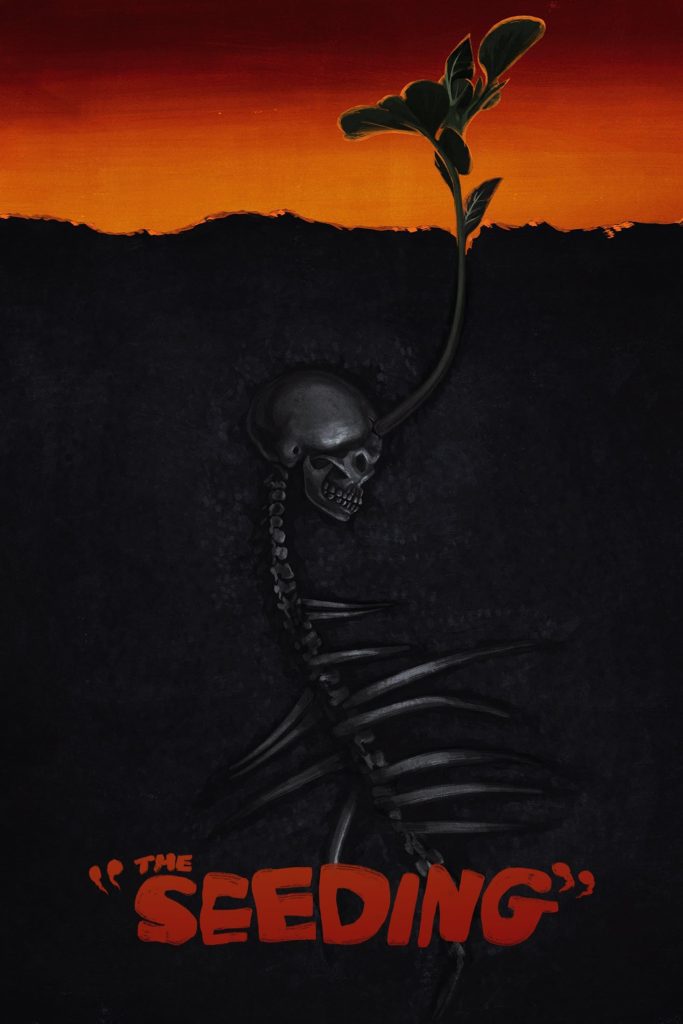In the vast, sun-baked expanse of the American desert, evil takes root and nightmares unfurl under the scorching rays. The Seeding is a slow-burn descent into primal terror, stripping away the comforts of civilization until only the harsh elements and our darkest instincts remain. From the minds of writer/director Barnaby Clay, this atmospheric chiller immerses viewers in a desolate canyon where the line between reality and waking nightmare frays by the minute.
With a minimalist story anchored by two powerhouse central performances, The Seeding doesn’t need buckets of blood or cheap jump scares to burrow under your skin and plant its menacing tendrils. This is dread conjured from implication, from the unsettling relationship dynamics and veiled motivations that fester like an ominous secret waiting to be disinterred.
As Stone’s entrapment extends from hours into days into weeks, an unmistakable sense of dread and wrongness settles in. Alina’s true motivations remain oblique, her actions and reactions growing increasingly erratic and unhinged. Is she a victim herself, held captive by the marauding pack of feral boys who stalk the canyon’s rim and lower supplies via bucket? Or is she the secret puppetmaster, a witch-like figure pulling the strings of this deranged cult? The Seeding leaves these questions wonderfully unanswered, allowing the implications and subtextual tensions to flourish.
Much of the film’s power lies in what goes unspoken between Haze and Sheil’s fraught, distrustful push-and-pull. With dialogue pared down to an atmospheric minimum, their complex relationship dynamics are expressed through furtive glances, telling gestures, and the occasional outburst of primal rage or desperation. Sheil is magnetic as the increasingly unnerving Alina, her alien stares and coiled intensity suggesting something profoundly off about this desert dweller’s very existence.
The Seeding’s greatest strength is its enveloping, steadily tightening atmosphere of dread. From the sun-bleached vistas and dizzying camera angles, to the unnerving sound design and ethereal score, an overriding sense of sickly disquiet permeates every frame. This is insidious, unsettling horror rooted not in overt frights, but in the implications and symbolism that leave you wrestling with uncertainty over what fresh terrors may be lurking just over the horizon.
While not everything gels perfectly – some metaphors are a bit too bluntly stated, and the slow-burn pacing borders on repetitive at points – The Seeding remains a singularly unshakable descent into atmospheric dread. By refusing to over-explain its mysteries or provide clear-cut resolutions, it leaves audiences to stew in their own discomfort over the implications of what they’ve witnessed. It’s a nightmarish vision that lingers like a hazy mirage, daring you to question what’s real and what’s the stuff of primal fears.
For those willing to succumb to its unhurried rhythm and embrace the disquieting ambiguities, The Seeding offers a masterclass in insidious, unsettling horror. It’s a film that understands sometimes what you can’t quite see or comprehend is more terrifying than any slasher’s knife or jump scare. While not every risk pays off, writer/director Barnaby Clay’s descent into existential dread gets under your skin in a way few recent horror outings have. Like the desert’s parched landscape itself, The Seeding will leave you thirsty for answers and all the more haunted by the implications.
Overall Score: 6.5/10
By subverting expectations and prioritizing atmosphere over conventional scares, The Seeding emerges as a creeping, atmospheric descent into primal terror. Its slow-burn approach won’t be for all tastes, especially during the more repetitive lulls. But for those who can sync up to its bleak, unsettling wavelength, it offers a masterclass in psychological horror rooted in implication, ambiguity, and the dark spaces of the unknown. Like the desert itself, it’s a film that lingers and dares you to question the nightmarish truth of what you experienced.

